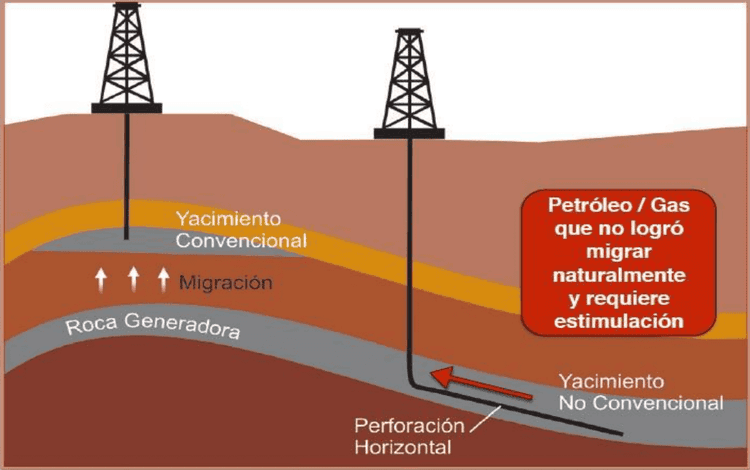During his five years in office, President Andrés Manuel López Obrador has said that the technique of extracting hydrocarbons: fracking, is not allowed. In the fifth government report offered from Campeche, he repeated it again, this time, as one of the measures taken to care for the environment.
However, Pemex continues to use this technique and to date no law or regulation has been passed that vetoes it. In Mexico, 8 bills have been promoted by different parliamentary groups to prohibit this practice. But all of them have been stopped, so the measure has remained in discourse and has no legal basis.
“It's not really a ban in the strict sense of the word. There is no document, law or publication in the Official Journal. There is no binding letter, in legal terms, to say that fracking was effectively banned during this six-year term,” explained Beatriz Olivera, a member of the Mexican Alliance against Fracking.
This alliance is a collective made up of more than 40 civil organizations of specialists and environmental defenders that monitor the process of initiatives. In addition to verifying that fracking continues to be carried out by state companies such as Petrleos Mexicanos (Pemex).
But what is fracking? , what are its impacts? and how is it that it continues to operate in Mexico?

Fracking infrastructure. Photo: Senate of the Republic.
Fracking, exploitation with water
Fracking, also called hydraulic fracturing or hydrofracturing, is a technique for obtaining gas or oil from the subsurface by breaking up underground geological formations (rock bodies) through the injection of high-pressure water.
The Mexican Alliance Against Fracking, as well as other organizations in Latin American countries, have indicated that fracturing a single well requires between 9 and 29 million liters of water.
This extraction can occur in “conventional” deposits, which is fracking that takes place in vertical wells; but also in “unconventional” ones, when hydrocarbons require horizontal wells that are drilled over large areas of territory.
Unconventional reservoirs consist of rock formations called shales or shale where gas or oil is found. Unlike conventional ones, they have difficulty passing through liquids.
Fracking has a history in Mexico since 1996. It began to be used in states such as Veracruz, Nuevo León and Tamaulipas. In 2018, with the arrival of President López Obrador, he included in number 75 of his 100 presidential commitments that “we will not use methods of extracting raw materials that affect nature and deplete water sources such as fracking.”
This led to the president ordering the cancellation of tenders for Pemex a year later in the Tampico - Misantla basin, between the states of Tamaulipas and Veracruz.
“From the Mexican Alliance against Fracking, we saw it very positive that since the beginning of the six-year term, the president's commitment was that this practice would no longer be carried out. It even seemed like an achievement to us. But over the years we see that (what happened in Tamaulipas) was practically one of the few actions that were taken for this purpose,” Beatriz Olivera points out in an interview with Causa Natura Media.
However, in 2020, the Alliance reported that the National Hydrocarbons Commission (CNH) had approved, on the grounds of a new exploration strategy for unconventional deposits, that Pemex could drill up to 18 wells with this technique in the Tampico - Misantla basin. Although to date, the federal government maintains that it has not been authorized.
In addition to this, although fracking is not carried out in unconventional reservoirs, it has continued to be done in conventional ones. According to Manuel Llano, from the organization CartoCrítica and the Mexican Alliance against Fracking, more than 1,100 conventional wells have been exploited for the first time during this six-year period.
In addition, the group of experts has published that next year's Federation Expenditure Budget allocates investment to use the fracking technique in two projects with an amount of 4.63 million pesos, which although it represents a reduction of 50% (in real terms) compared to what was allocated in 2023, it still supports the practice.

Graph of the types of deposits for fracking. Source: Senate of the Republic.
Lawless and with impacts
“In general, we need a law that supports the president's commitment. In this regard, it is also worth mentioning that in this administration, at least eight initiatives were presented in the Chamber of Deputies and the Senate by different political parties to prohibit fracking, unfortunately, none were ruled or even discussed in committee,” explained the member of the Mexican Alliance against Fracking.
According to Olivera, when he approached the authorities to question why the initiatives did not succeed, including a reform to the Hydrocarbons Law, the Chamber of Deputies replied that a law did not make sense if the president had already said that it would not be allowed.
However, to truly stop fracking, institutions such as the CNH or the Security, Energy and Environment Agency (ASEA) need to stick to a law. And, until now, there is no legal basis prohibiting fracking.
What activists are most concerned about is that their impacts will continue to be allowed. It has been documented that fracking can pollute aquifers, generate droughts in water sources, ruptures of underground soil layers and problems for activities such as livestock and agriculture.
Some supporters of the use of this technique argue that this is the way to maintain energy and obtain more natural gas, but those who oppose it call for extraction with practices that are less invasive and harmful to the environment and to those who depend on it.
*This content was produced with the support of the Institute for War And Peace Reporting and mentoring from Animal Político, within the framework of the Mexican Journalism Resiliency program.



Comentarios (0)